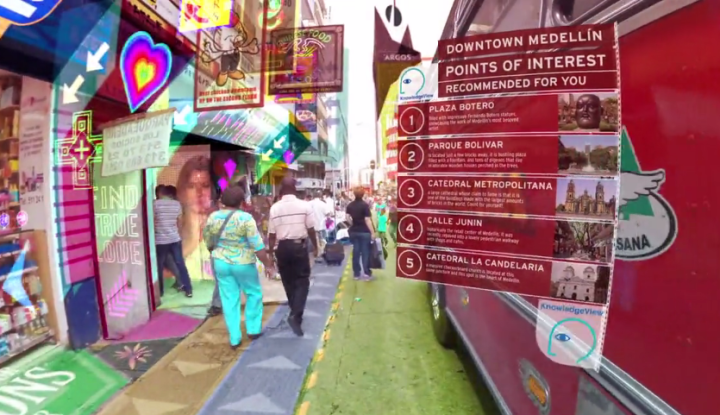Virtual reality has staked a claim on travel. Interactive, immersive technology aligns well with the objectives of travel marketers, making the medium ideal for marketing travel experiences of all kinds. While VR (and 360 video) have immense potential, the majority of efforts are experimental tests of the new format. It’s not yet clear whether or not VR will become a mainstay in travel.
Some in the industry are more inclined to see augmented reality as a more mainstream win in travel. Augmented reality layers additional information on a live view of the world. Google Glass was the most widely known device for this sort of experience. While it didn’t catch on, it’s still quite early in the technology cycle. With new VR headsets in consumer’s homes — with 171 million users by 2018 — there will clearly be more consumer experience with headset-based interfaces.
This brings us to Keiichi Matsuda’s film Hyper-Reality, a story that takes place in the near future. It follows a resident of Medellin, Colombia as she goes about her day in augmented reality. Promotions from brands proliferate throughout her augmented experience, alongside directions to exit public transit and walk to the nearest service kiosk. The film ends with a cheeky twist, suggesting how augmented reality could trigger membership and loyalty.
The film brings up many areas of interest for travel: directions, payments, customer service, loyalty, and in-destination marketing. The AR-fueled traveler experience is quite distinct on all of these points: The traveler has integrated wayfinding capabilities, can pay for items seamlessly without having to change currencies, has quick access to help, is able to earn and use loyalty points in a wide variety of real-time applications, and, perhaps most importantly for some, can be enticed with live offers while in-destination.
The film also is a stark representation of the flip side of AR: over-stimulation, an over-reliance on augmentation, poor human and technical connectivity, and new security threats related to biometric identification. With every new technology comes applications that can both help and hinder the human experience. One person’s “help” is another’s “hinder.” This reveals new opportunities for managing the tsunami of information within the stimulation-laden interface.
After watching his provocative perspective of “life in AR,” it’s difficult not to wonder what’s next for visionary director Keiichi Matsuda. Will this world come to pass? Travel certainly plays a role, and technology is transforming travel at a rapid pace.
